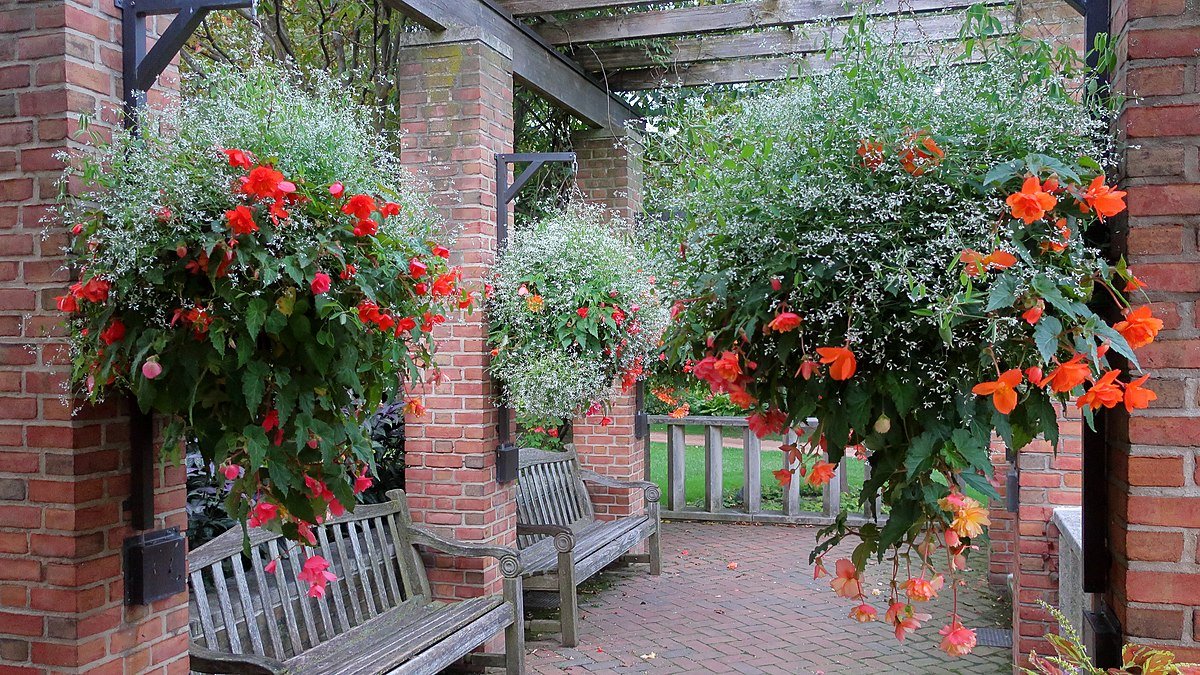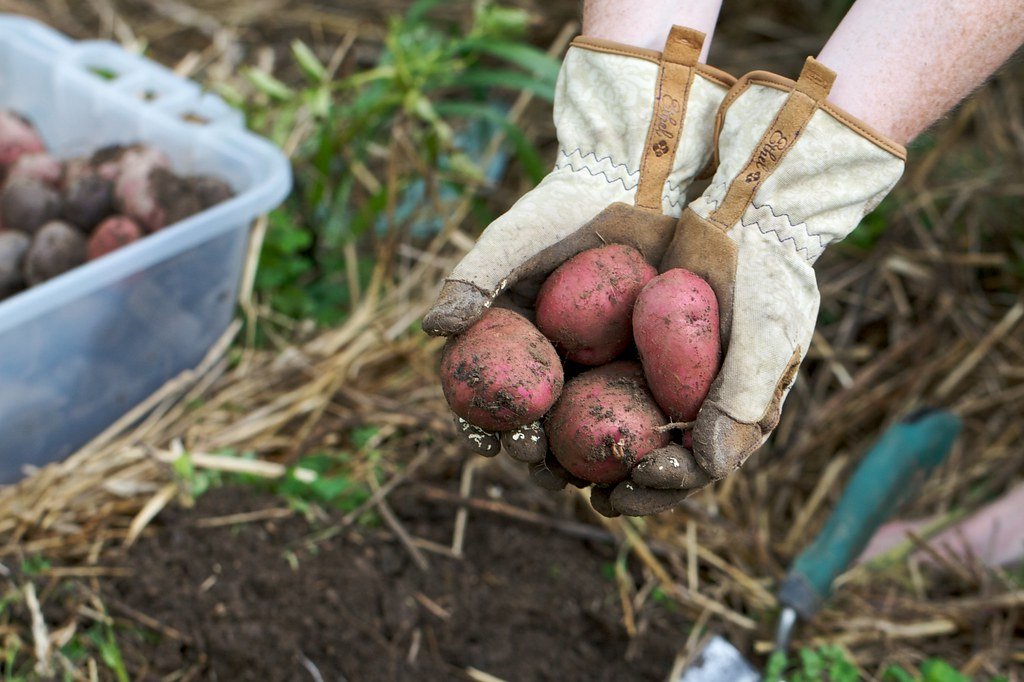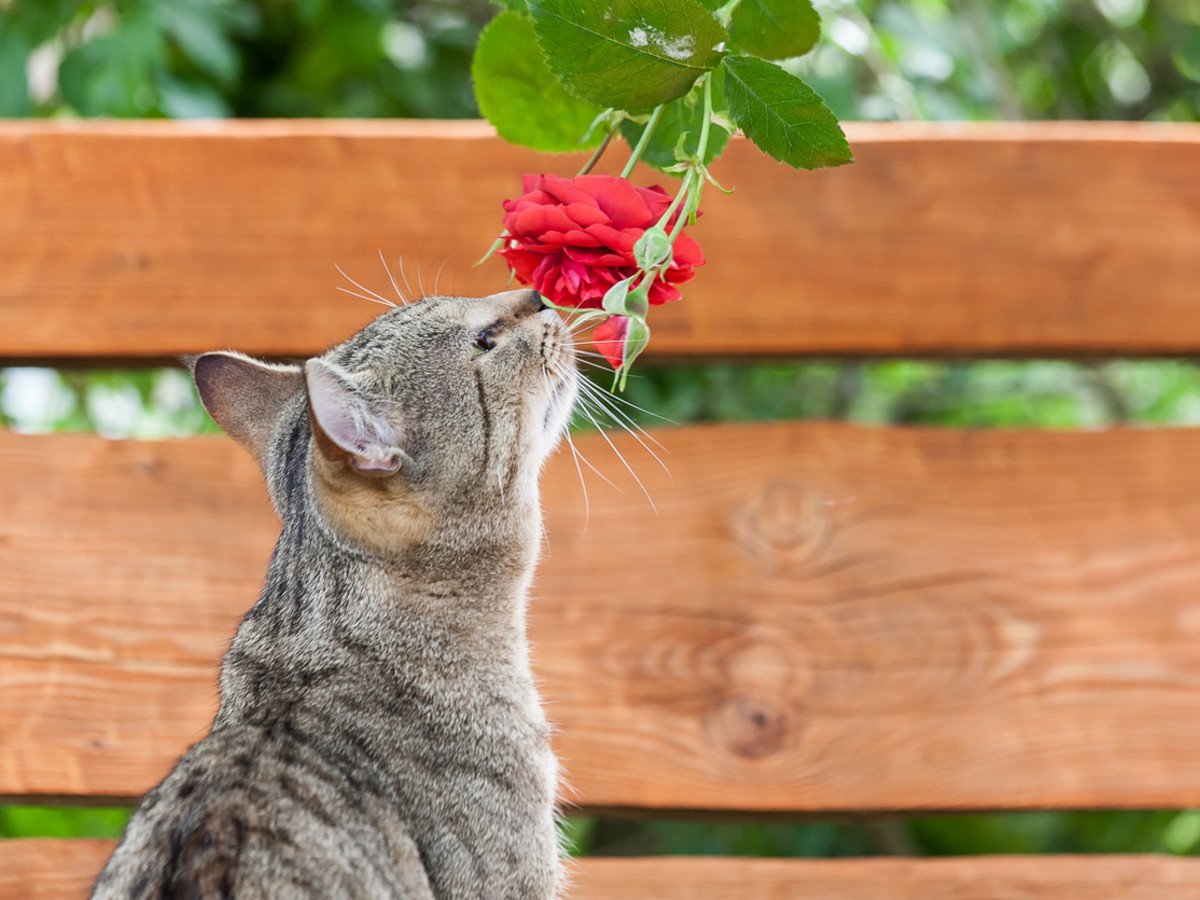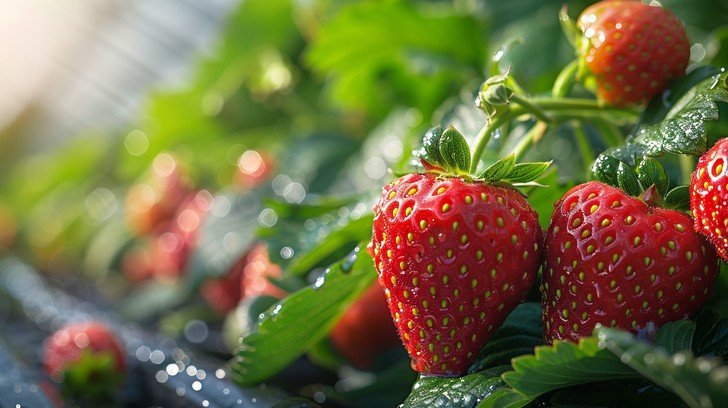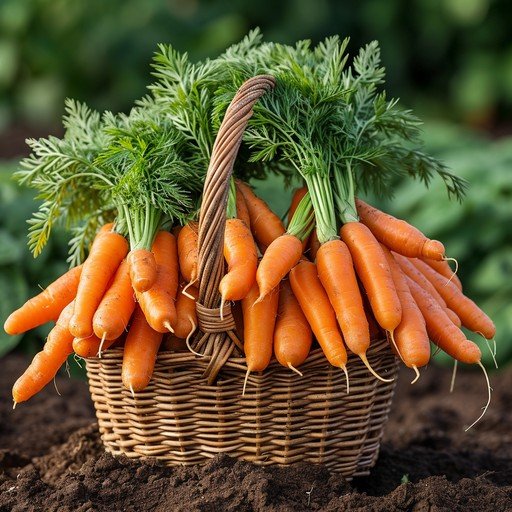The Complete Guide to Growing Cherry Plums (Prunus cerasifera): A Garden Marvel of Beauty and Bounty
Welcome back to Garden KT, where we explore the most rewarding and beautiful additions you can make to your landscape. Today, we are shining a spotlight on a plant that is often overlooked in favor of its larger, more famous cousins: the remarkable cherry plums tree, botanically known as Prunus cerasifera.
If you are seeking a truly multi-purpose tree that offers spectacular ornamental value, exceptional hardiness, and a bounty of tart, delicious fruit, look no further. The cherry plums tree is a powerhouse of the Prunus genus, earning its place in gardens across the world not just for its fruit, but for its resilience and the stunning display of its early spring blossoms.
For many gardeners, the sight of the cherry plums tree in late winter or early spring is the first definitive signal that the long, cold season is truly over. Its delicate clouds of white or pale pink flowers appear on bare wood, often weeks before any other fruit trees dare to bloom, providing a vital source of early nectar for pollinators and a breathtaking sight for us.
This comprehensive guide will delve into every aspect of growing, caring for, and utilizing your cherry plums. We will cover everything from identifying the best varieties to planting techniques, specialized care, and the best ways to transform your harvest into culinary delights. Whether you are planting a single specimen for its purple foliage or hoping for a prolific edible hedge, this is your definitive resource for mastering the cherry plums tree.
The Botanical Identity of the Cherry Plums
To properly appreciate and grow this tree, it helps to understand exactly what the cherry plums tree is, and how it differs from other, similar-sounding trees.
The cherry plums tree (Prunus cerasifera) is not a hybrid of a cherry and a plum. Rather, it is a distinct species within the Prunus genus, which is also home to true plums (Prunus domestica), cherries (Prunus avium), peaches, and almonds. The confusion arises from its common names—Myrobalan plum, or simply cherry plums—which refer to its small, cherry-sized fruits that have the flavor and pit structure of a plum.
The Myrobalan Connection
The alternative name, Myrobalan plum, is often used, especially in commercial settings. Historically, the cherry plums tree has been highly valued as a rootstock. Its vigorous growth, adaptability to various soil types, and resistance to common plum diseases make it an ideal, sturdy base onto which other, more sensitive plum varieties are grafted. Therefore, the cherry plums rootstock is foundational to much of the plum industry.
Native Habitat and Historical Use
The cherry plums tree is native to Southeast Europe and Western Asia. Its long history of cultivation means it has naturalized across much of Europe and North America. It is a rugged, pioneering species often found growing wild in hedgerows, scrubland, and alongside roads, proving its tenacity and tolerance for challenging conditions. This inherent hardiness is a major benefit for home gardeners. The fruits of the wild cherry plums were consumed by ancient civilizations, showcasing their long-standing relationship with humans as both a food source and an ornamental plant. The adaptability of the cherry plums is truly remarkable.
Key Characteristics of the Wild Cherry Plums
| Feature | Description |
| Scientific Name | Prunus cerasifera |
| Size at Maturity | Can reach 15 to 30 feet, often grown smaller as a bush/hedge. |
| Flowers | Profuse, usually white, sometimes pale pink. Blooms very early (late winter/early spring). |
| Fruit | Small (1/2 to 1 inch), round or oval, ripening to yellow, red, or purple. |
| Foliage | Typically green, but popular cultivars are famous for deep purple leaves. |
| Hardiness | Highly adaptable, generally hardy from USDA Zones 4 to 8. |
Knowing these traits will help you understand why your newly planted cherry plums tree is so eager to please and why it performs so well when compared to other fruit trees that demand perfect conditions.
Why Grow Cherry Plums? Versatility in the Garden
The cherry plums tree is a true workhorse, offering several distinct benefits that appeal to a wide range of gardeners, from the purely ornamental enthusiast to the dedicated food forager.
1. The Ornamental Powerhouse: Early Blooms
As mentioned, the bloom time of the cherry plums tree is arguably its greatest ornamental feature. Often blooming in late February or March, the tree becomes smothered in a beautiful mass of tiny flowers before the leaves even emerge. This early bloom provides crucial interest in a dormant garden and creates a stunning focal point. When planted alongside evergreens, the contrasting white or pink of the cherry plums is simply breathtaking.
2. The Appeal of Purple-Leaf Cherry Plums
Beyond the standard green-leaf species, several cultivars of cherry plums are cultivated purely for their dramatic foliage. The most famous is often labeled as Prunus cerasifera ‘Pissardii’ or ‘Nigra’. These purple-leaf cherry plums maintain a deep, rich burgundy or near-black color throughout the growing season. This offers unparalleled color contrast when paired with green, silver, or gold foliage plants, making purple-leaf cherry plums indispensable for landscape design.
3. Edible Fruit for Foraging and Processing
The fruit of the cherry plums is a prized asset for those interested in food forestry, foraging, or making preserves. The fruit is small and tart when yellow or orange, but ripens into a sweet, rich plum flavor when it turns dark red or purple. While perhaps too tart to eat in large quantities fresh off the tree for most people, the flavor is phenomenal when cooked. This makes the cherry plums fruit highly sought after for jams, jellies, and sauces.
- Outbound Link Opportunity: For more on the unique culinary uses of this fruit, including a deeper look at the taste profiles of the different colors of the cherry plums, you can explore resources like the Food Forest Garden guide on Cherry Plums.
4. An Excellent Barrier and Hedgerow Plant
Due to its fast growth rate and dense, multi-stemmed growth habit if left unpruned, the cherry plums tree is an excellent candidate for hedges, windbreaks, or screening. Planted closely together, they create a formidable barrier, especially if you choose a thorny variety. Their ability to tolerate tough sites, poor soil, and urban pollution only adds to their versatility. The dense structure of a cherry plums hedge also offers fantastic cover and habitat for birds and small wildlife.
Cultivation Guide: Planting and Locating Your Cherry Plums Tree
Getting the foundation right is key to ensuring your cherry plums tree thrives, giving you years of beautiful blooms and abundant fruit.
Choosing the Right Location
The cherry plums tree is remarkably unfussy, but it performs best when its basic needs are met:
- Sunlight: Full sun is highly recommended. The cherry plums tree requires at least six to eight hours of direct sunlight per day. This is particularly crucial for the purple-leaf cherry plums cultivars; without enough sun, their leaves will revert to a dull green. Sunlight is also essential for maximizing the fruit set and ripening of the cherry plums fruit.
- Soil: Adaptable to almost any soil type, from sandy to heavy clay, but it must be well-draining. Like all Prunus species, the cherry plums tree absolutely hates “wet feet,” meaning it will struggle and potentially die in consistently waterlogged conditions. The ideal soil is moist, fertile loam with a neutral to slightly acidic pH.
- Space: While you can prune the cherry plums tree to maintain a smaller size, remember its mature potential (15-30 feet tall and wide). Ensure it is planted away from foundations, septic lines, and other structures where its robust root system could cause issues.
Planting Your Cherry Plums Tree
Whether you purchase a bare-root seedling or a containerized tree, the planting method is similar and vital for establishing healthy growth.
- Preparation: Dig a hole that is two to three times wider than the root ball, but no deeper. Loosening the soil in the wider area encourages lateral root growth, which is critical for the stability and health of the cherry plums tree.
- Placement: Place the tree in the center of the hole. The root flare (the area where the trunk begins to widen before the roots) should be visible and sitting just at or slightly above the surrounding soil level. Never bury the root flare of the cherry plums.
- Backfilling: Gently fill the hole with the original soil, breaking up any large clumps. Lightly tamp the soil to remove large air pockets, but do not compact it heavily.
- Watering: Give the newly planted cherry plums tree a deep watering immediately after planting. This helps settle the soil around the roots and eliminates any remaining small air pockets.
- Mulch: Apply a 2-4 inch layer of organic mulch (like wood chips or shredded bark) around the base of the tree. Keep the mulch a few inches away from the trunk itself, creating a donut shape. Mulch helps retain moisture, regulate soil temperature, and suppresses competing weeds around your vulnerable cherry plums.
Essential Care and Maintenance for Cherry Plums
The cherry plums tree is known for its hardiness, making maintenance relatively straightforward. However, proper pruning and disease awareness are key to long-term success.
Watering Needs
Once established (typically after the first two years), the cherry plums tree is quite drought-tolerant. During the establishment phase, however, consistent watering is essential.
- Year 1: Water deeply once or twice a week during dry periods. Deep watering encourages deep root growth, making the cherry plums tree much more resilient.
- Mature Trees: Only requires supplemental watering during prolonged drought conditions. Overwatering is a more common problem than underwatering for established cherry plums.
Fertilization
If your cherry plums tree is planted in fertile soil, it may require little to no fertilizer. However, if growth is slow (less than 12-18 inches of new growth per year), a balanced fertilizer application may be helpful.
- Timing: Apply a balanced, slow-release fertilizer (like a 10-10-10) in early spring just before new growth begins.
- Purpose: The goal is healthy foliage and structure. Over-fertilization, especially with nitrogen, can lead to excessive leafy growth at the expense of fruit production on your cherry plums. Always follow the product’s instructions carefully.
Pruning: The Most Important Step
Pruning is critical for stone fruits like the cherry plums tree for two primary reasons: controlling size and shape, and preventing the spread of common fungal diseases.
- Timing is Key: Unlike apples or pears, which are pruned in winter dormancy, the cherry plums tree and all other Prunus species should be pruned in mid-summer or late summer (after the harvest). Pruning during the dormant season leaves the cuts vulnerable to fungal pathogens like Silver Leaf Disease, which can be fatal to the tree. Pruning in summer allows the wounds to heal quickly.
- The Goal (Shape): For fruit production, most gardeners train the cherry plums tree into an open center or vase shape. This involves removing the central leader and allowing three to five scaffold branches to grow outward. This shape maximizes sunlight penetration and air circulation, both of which are vital for reducing humidity and preventing fungal infections in the dense canopy of the cherry plums.
- What to Remove:
- Dead, Diseased, or Damaged Wood (the 3 Ds): Always remove these first.
- Suckers: New, rapidly growing shoots emerging from the base or below the graft union. These sap energy from the main cherry plums tree.
- Crossing Branches: Branches that rub against each other should be thinned to prevent bark damage, which creates entry points for pests and disease.
- Internal Link Opportunity: For a visual step-by-step guide on establishing the open-center pruning method, consult our Garden KT article on Pruning Your Plum Tree for Maximum Harvest.
Pests and Diseases Affecting Cherry Plums
While the cherry plums tree is generally tough, it is susceptible to the same issues that affect other stone fruits. Understanding these threats allows for prompt, preventative action.
Common Diseases
The greatest threat to all Prunus trees, including cherry plums, comes from fungal infections.
- Bacterial Canker (Pseudomonas syringae): Causes sunken areas (cankers) on the bark, sometimes accompanied by a gooey ooze. Prune out affected areas immediately and disinfect tools.
- Silver Leaf Disease (Chondrostereum purpureum): As mentioned, this is a major concern. Spores enter through pruning cuts and cause the leaves to develop a silvery sheen. The primary defense against Silver Leaf is only pruning the cherry plums tree during the summer months when the spores are less active and the tree can heal faster.
- Brown Rot (Monilinia fructicola): Attacks flowers and fruit. The fruit will rot and often remain mummified on the tree. Good air circulation (via proper pruning) is the best preventative measure against brown rot on cherry plums.
Common Pests
Insects that plague other plums will also target the cherry plums.
- Plum Moth: The larvae tunnel into the developing fruit, making them inedible. Hanging pheromone traps in the spring helps monitor their presence and allows you to time targeted, organic sprays if necessary.
- Aphids: Can colonize new growth, sucking sap and transmitting viruses. They are usually controlled by beneficial insects, but a strong blast of water or a neem oil application can control severe outbreaks on the cherry plums.
Because the main risk of growing a cherry plums tree is disease, maintaining a clean, well-pruned tree is the best method of control.
Harvesting and Culinary Uses of Cherry Plums
The reward for proper care of your cherry plums tree is a unique and often abundant harvest. Knowing when and how to pick the fruit ensures the best flavor.
When are Cherry Plums Ripe?
The exact ripening time varies by cultivar and climate, but generally, the cherry plums fruit is ready for harvest from mid-summer to late summer.
The visual change in the cherry plums is the best indicator:
- Yellow/Orange: These are the earliest stage and are tart—ideal for making intensely flavorful, sour jams or chutneys.
- Red/Deep Purple: As the fruit darkens, the sugar content increases dramatically, making the flavor much richer and sweeter. These are the best for fresh eating, desserts, or sweet preserves.
Harvest the cherry plums by gently twisting the fruit off the branch. They should detach easily when fully ripe. If you have to pull hard, they aren’t ready. Since the fruit is small and often numerous, laying a tarp under the tree and gently shaking the branches is a common, efficient harvesting technique.
Culinary Delights from Cherry Plums
The distinct, slightly tart flavor of the cherry plums is perfect for cooking. Their versatility is what makes them a forager’s favorite.
- Jams and Preserves: The high pectin and acid content in cherry plums makes them ideal for jams and jellies that set beautifully with little or no added pectin.
- Sauces and Chutneys: The tartness pairs wonderfully with savory dishes, such as pork or duck. A spiced cherry plums chutney is a fantastic alternative to traditional cranberry sauce.
- Liqueurs and Wines: The fruit can be infused in alcohol (like vodka or gin) to make a delicious homemade liqueur or fermented into a unique fruit wine.
- Desserts: While eating the fruit raw is possible, cooking them into pies, crumbles, or tarts mellows the tartness and concentrates the sweetness.
Every single cherry plums tree can produce far more fruit than a family can use fresh, making them a perfect candidate for sharing or preserving for the winter months. The intense, deep flavor is truly unmatched.
Popular Cultivars of Cherry Plums
When choosing a cherry plums tree for your garden, you will likely encounter one of two categories: the fruiting varieties or the ornamental, purple-leaf varieties.
1. Ornamental Cherry Plums
These are primarily grown for their stunning dark foliage and are the most commonly planted variety in urban settings.
- Prunus cerasifera ‘Nigra’: Often considered the best purple-leaf ornamental. It features striking black-purple foliage throughout the summer and is covered in deep pink flowers in early spring. The fruit is usually small and less abundant than green-leaf varieties, but it is technically edible.
- Prunus cerasifera ‘Pissardii’: Another classic purple-leaf variety, but the foliage is often a slightly lighter, more reddish-purple than ‘Nigra.’ It also has paler pink to white flowers. Both ‘Nigra’ and ‘Pissardii’ are beautiful options for adding structure and color contrast to your landscape.
2. Fruiting Cherry Plums
If your primary goal is a large harvest of delicious cherry plums, you will want to seek out varieties that are bred for maximum fruit production. These often have standard green leaves.
- Hess’s Yellow: A common variety that produces prolific yellow-skinned fruit.
- Purple Leaf Fruiting Varieties: Some modern crosses attempt to combine the beautiful purple foliage with good fruit set, offering the best of both worlds. Look for specific nursery tags that guarantee good fruiting.
When selecting any cherry plums tree, verify its hardiness zone and whether it requires a pollination partner. While many cherry plums are self-fertile (meaning a single tree can produce fruit), they nearly always produce a heavier crop when cross-pollinated by another compatible Prunus species or even a different cherry plums cultivar.
- Outbound Link Opportunity: To explore the full spectrum of plum varieties and their necessary pollination partners, the RHS website often provides detailed lists for specific regional suitability.
Cherry Plums as a Foundation: Rootstock and Grafting
Finally, understanding the role of the cherry plums tree as a rootstock is important for any gardener interested in growing other fruit trees.
The vigor, tolerance for different soil types, and hardiness of Prunus cerasifera make it the go-to rootstock for many commercial plums, apricots, and even some peaches. If you have ever considered getting into grafting, the cherry plums tree provides a highly compatible and incredibly reliable foundation. Its natural ability to shrug off adversity is passed on to the grafted tree, a testament to the sheer toughness and adaptability of the cherry plums.
The Enduring Appeal of the Cherry Plums Tree
The cherry plums tree is a testament to the idea that a plant can be both beautiful and highly productive. It offers a stunning early spring display that announces the end of winter, provides delicious fruit that is perfect for preserving, and is resilient enough to thrive in conditions that would challenge many other ornamental trees.
By choosing the right location, implementing smart pruning techniques in the summer, and protecting your cherry plums from pests and disease with proper garden hygiene, you are ensuring a lifetime of enjoyment. Whether you plant the classic purple-leaf cherry plums for color or a green-leaf variety for a bumper crop of fruit, you are adding one of the most versatile and rewarding trees in the Prunus genus to your landscape.

